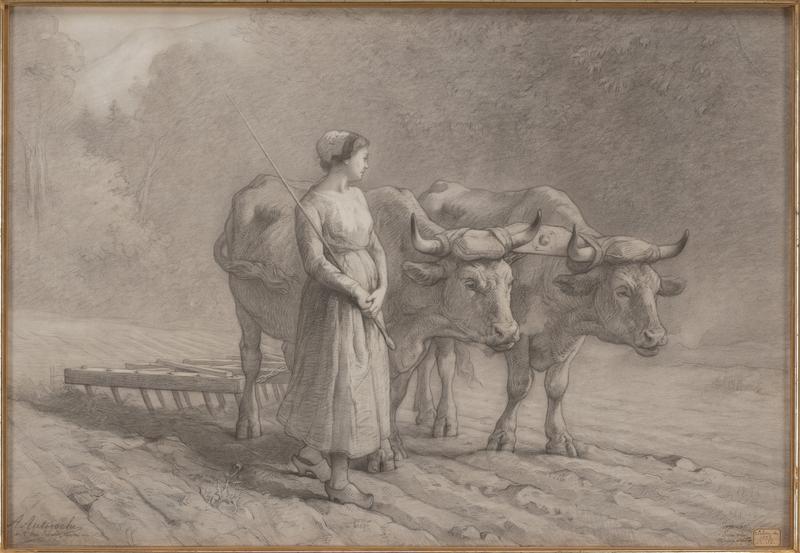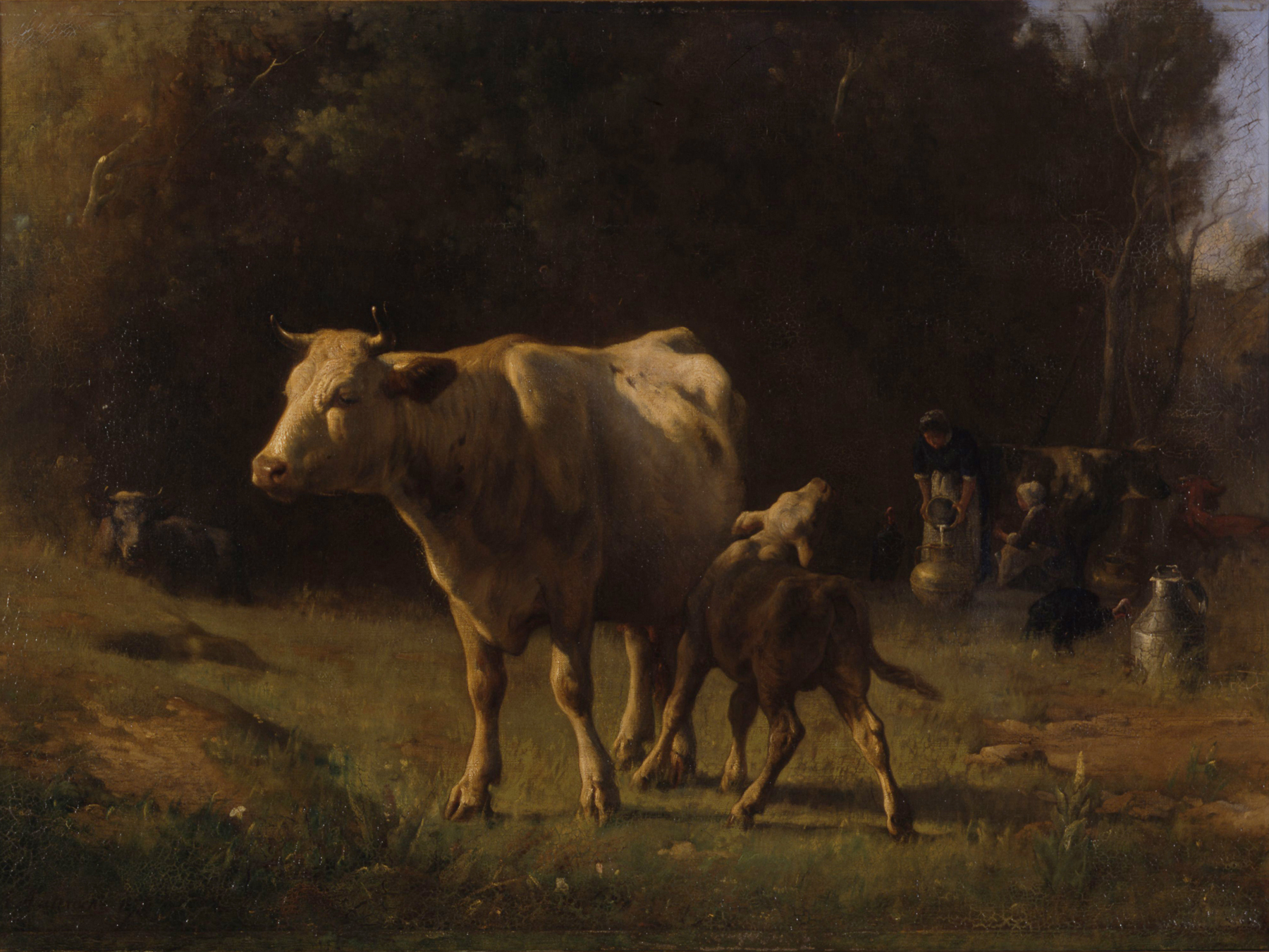
12. Alfred Eloi Auteroche, The Harrower
| Artist | Alfred Eloi Auteroche, French, Paris 1831–Paris 1906 |
| Title, Date | The Harrower (La herseuse), 1872 |
| Medium | Pencil |
| Dimensions | 22 7/16 × 32 11/16 in. (57 × 83 cm) |
| Inscriptions + Marks | Lower left: A. Auteroche / A Mr Henri Besnard, souvenir amical. | Lower right: “Ense vir mulier aratro,” A l’homme l’épée, à la femme la charrue [To the man the sword, to the woman the plow] / 1870–71 |
| Provenance | Sale, Binoche-Desclee de Maredsous, Orleans, France, March 12, 2016, no. 81. [Galerie Christian Le Serbon, Paris, until 2018; to Weisberg]; Yvonne and Gabriel Weisberg, Minneapolis (2018–22; given to Mia) |
| Exhibition History | Paris Salon 1872, no. 37; "Reflections on Reality: Drawings and Paintings from the Weisberg Collection," Mia, 2022–23 |
| Credit Line | Gift of Dr. Gabriel P. and Yvonne M.L. Weisberg 2022.80.3 |
The most studied aspect of Alfred Auteroche’s career may be the sketchbook he kept while driving an ambulance during the Paris Commune of 1871.1 Auteroche served on the Republican side, which defeated the Communards on May 28, 1871. The sketches show his admiration for soldiers and medics but also the horrors of war as they played out in field hospitals and improvised morgues. The year after this bloody conflict, the artist exhibited The Harrower at the Paris Salon. The inscription, penned in Latin and French, seems to reference the idea that women were left to work the fields as men fought for their political beliefs. This large scene may thus have served as a memorial to the war’s lost men and burdened women.

As a painter, Auteroche specialized in landscapes and animals. He studied at the École des Beaux-Arts (School of Fine Arts) in Paris under Léon Cogniet and Jacques Raymond Brascassat; it was Brascassat who inspired Auteroche to focus on rural scenes (fig. 1). These usually depict areas along the Normandy coast, but he also worked in Auvergne, in central France, and possibly in Vosges, in the northeast. Auteroche exhibited at the Salon from 1859 to 1887.
In style, subject, and poetic monumentality, the present drawing recalls the works of Jean-François Millet and Jules Breton (cat. no. 40), though it may be noted that this field worker is more delicate than is typical of either artist. Despite Auteroche’s reference to a plow in the inscription, the device being pulled by the oxen is technically a harrow, which breaks up clods of soil and leaves a smoother finish on the land. The art dealer Christian Le Serbon, who once owned the drawing, posits that this scene took place in Vosges, since plowing in that region was done almost exclusively with teams of oxen. He also raises the question of whether the present work served as a model for a painting, because Auteroche exhibited a work titled La herseuse in the painting section of the Salon of 1875. Alternatively, the title may have been referring to this drawing, which the artist may have displayed a second time.2
TER
Notes
The sketchbook, purchased in 1992 by the Archives Départementales des Hauts-de-Seine, Nanterre, France, is titled “Souvenirs d’un ambulance, 3éme carnet.” It contains 58 leaves of sketches and descriptions covering March 11–June 24, 1871. The title suggests the production of two sketchbooks covering earlier phases of the war; https://en.calameo.com/hauts-de-seine/read/00644343563dcc0819459 ↩︎